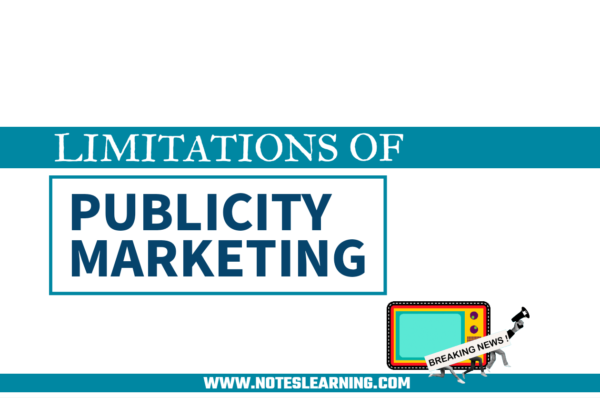What is Publicity in Marketing ?
Publicity marketing is a strategic effort to create buzz and awareness about a business, products or offerings by leveraging media channels and platforms. It is the process of leveraging media channels to communicate a message, generate interest, and build credibility for the business, products or offerings. Some of the forms of publicity marketing are:
| Celebrity Endorsement | Award Functions | Community Engagement |
| Awards and Recognitions | Guerrilla Marketing | Trend Jacking |
| Social Media Campaigns | Press Releases | Product Demonstration |
| Content Marketing | Public Relation Stunts |
Characteristics of Publicity
Some of the distinct features of publicity are:
Non-Paid
There is no involvement of any kind of payment to the media for coverage. Publicity is wholesomely dependent upon media, journalists and editors. The more they cover and publish, the better the publicity. Marketers do not pay for space in newspapers, magazines or any digital media.
Unpredictable Results
There is no particular direction of publicity marketing. The result from such marketing can take any form. It will reflect its effectiveness in the way it has been presented by the media and journalists. Sometimes publicity can be a fad and sometimes it can be a reason for revolution.
Limited control
Similar to results, marketers have very limited control over its flow. Marketers have limited control over the final outcome of publicity and how the message from publicity is being perceived. Media, journalists, editors and producers control the content and emotions of the message or publicity marketing.
Media Relations
Publicity form of marketing is heavily dependent upon the media and media personnel. Therefore, establishing and maintaining relationships with journalists, media persons, television producers, influencers and editors is crucial for publicity marketing. Marketers can leverage the media relation for regular and better coverage.
Cost effective
This is a non-paid form of marketing. Marketers do not directly invest in this form of marketing. Marketers may engage or invest in PR efforts but the coverage of the publicity content is free. This free publicity approach makes this form very cost effective.
Broader Target
Publicity targets the broader audience. This type of marketing targets larger demographics and the audience of media channels determines the nature of the audience. Different media have different audiences, based on the nature of the audience the marketers require, they endorse their news, products or services.
Limitations of Publicity
- Marketers have limited control over the content and intent of the message.
- It is difficult to measure the return on investment (ROI) for publicity marketing. The impact of this marketing is difficult to quantify.
- The success of this marketing is based on a narrative formed by the media personnel. Portrayal of content is more powerful than the content.
- There is no long term impact of such marketing. One disappears along with another bigger publicity marketing.
- This sort of marketing is unable to target a specific customer group or specific geographic location, unlike digital marketing.
- Publicity depends on narratives of the media houses and other related stakeholders. Hence, there is high risk of negative publicity or consequences as negative is quicker than positive.
- Lastly, there is no guaranteed outcome of this type of publicity marketing.


